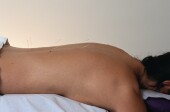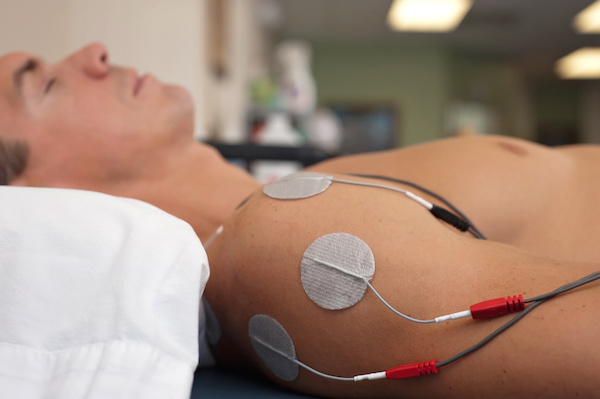
MONDAY, March 18 (HealthDay News) — Having an osteopath move your back muscles using techniques that include stretching, light pressure and resistance (called OMT) may trump ultrasound therapy for the relief of lower back pain, new research suggests.
According to the study, OMT was not only more effective than ultrasound for treating low back pain, but its use also allowed participants to cut down on the amount of medication they took to treat their lower back pain throughout the 12-week study. Nearly two-thirds of the individuals who received OMT had a 30 percent reduction in their pain level, and half of those patients had a 50 percent reduction in their pain level, the study showed.
“The main message from this research study is that hands-on treatment provided by an osteopathic physician is a viable option that can reduce pain and prescription-drug use,” said study author Cathleen Kearns, of the Osteopathic Research Center at the University of North Texas Health Science Center in Fort Worth. “People who suffer from chronic low back pain are often treated with prescription drugs that are not always effective in controlling chronic low back pain, that may require higher doses over time and that have serious side effects.”
For example, some people who take ibuprofen or other non-steroidal anti-inflammatory drugs to ease back pain may develop gastrointestinal issues such as bleeding ulcers.
During OMT, osteopathic doctors apply pressure with their hands to assess tenderness, asymmetry, range of motion and any noticeable changes in the lower back. “The osteopathic physician then applies several hands-on techniques designed to increase range of motion, reduce tenderness and restore the body to its optimal level of function,” Kearns said.
By contrast, ultrasound therapy uses sound waves to warm the body’s tissues and cause muscles to relax. “In our study, patients who received ultrasound therapy did not show a reduction in pain or in the prescription medications they took,” Kearns said. “Based on these results, I would not recommend ultrasound therapy for low back pain.”
The findings appear in the March/April issue of the journal Annals of Family Medicine.
Of the more than 450 people in the study with chronic low back pain, those who received OMT also were more likely to be satisfied with the results of their treatment than were their counterparts who received ultrasound therapy. That said, there were no differences seen for function, general health or work-related disability between the groups, the study showed.
Dr. Kenneth Johnson, executive dean of the Ohio University Heritage College of Osteopathic Medicine, in Athens, is a fan of OMT for low back pain. The new study “validates some of the work we do on a day-to-day basis,” he said. “I feel confident that OMT helps relieve back pain and, as a result, patients have to take less medication.”
Less medication means fewer side effects, Johnson added.
Another expert noted that there are a lot more ways to treat lower back pain than just ultrasound and OMT.
The first step is to take a full history and do a physical exam to determine the cause of the back pain, said Dr. Michael Mizhiritsky, co-founder of New York Bone and Joint Specialists, in New York City. “Is it joint-related, disc-related or arthritis? Is there anything broken?” he asked.
Depending on what is causing the pain, there are a host of treatment options, including ice or heat, physical therapy, exercise, stretching, injections and, sometimes, surgery, Mizhiritsky said.
More information
Learn more about low back pain and its treatments at the U.S. National Institutes of Health.

